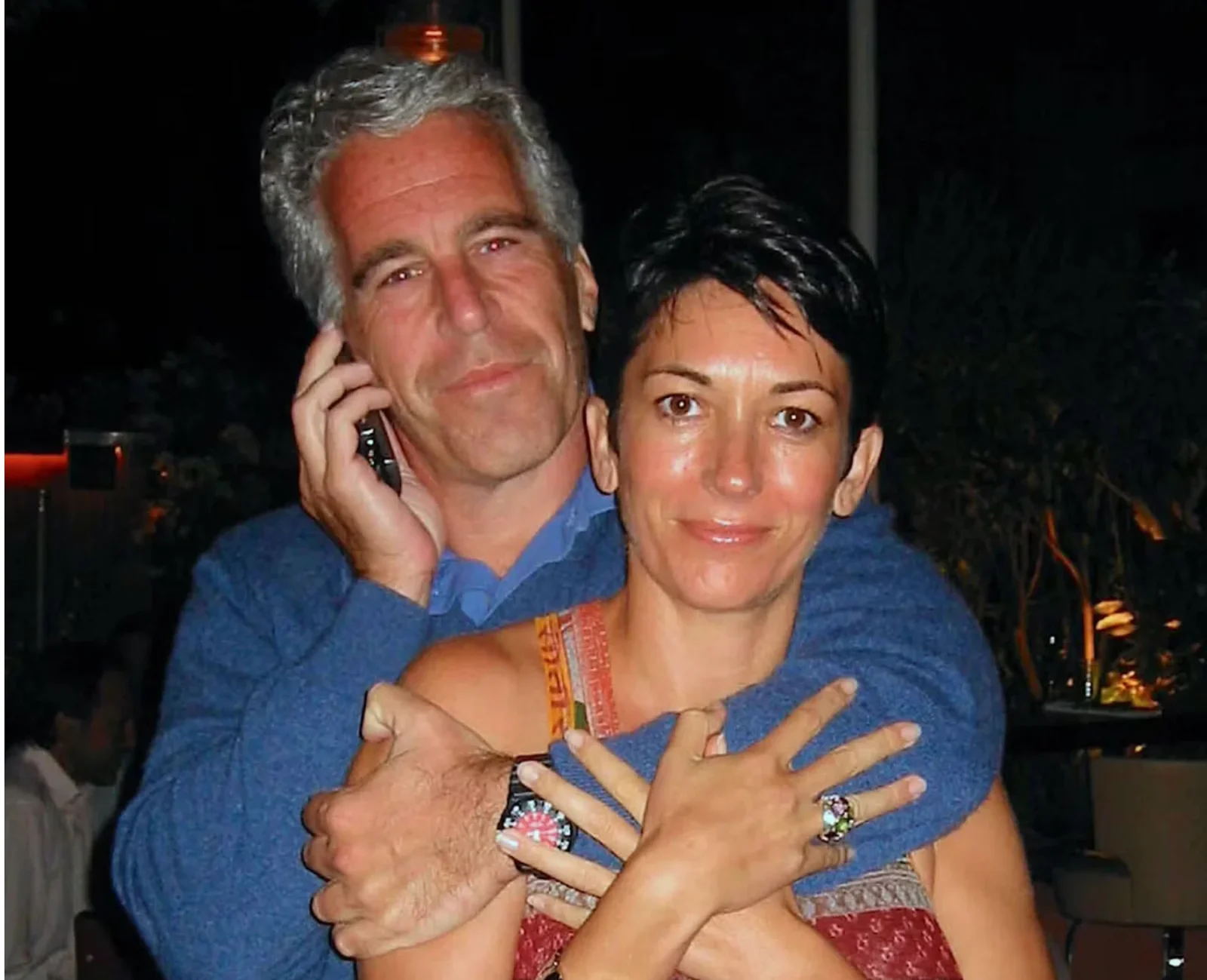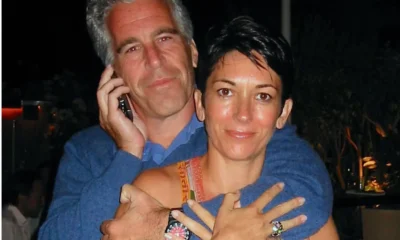World News
Bitcoin spot ETFs heat up, SBF’s bail revoked and web3 gaming adoption grows in Asia on August 17, 2023 at 7:00 pm
Welcome back to Chain Reaction.
To get a roundup of TechCrunch’s biggest and most important crypto stories delivered to your inbox every Thursday at 12 p.m. PT, subscribe here.
The digital asset space is still trucking along, while there were some big headlines, the week was arguably a little less chaotic (for now). Check out what caught our attention below.
This week in web3
A bitcoin spot ETF could open the floodgates for wider crypto demand
Web3 gaming adoption is skewing toward Asia, and the rest of the world may have to play catch-up
CoinDesk to cut staffing ahead of potential sale
Former FTX CEO Sam Bankman-Fried’s bail revoked ahead of October trial
Worldcoin ignored initial order to stop iris scans in Kenya, records show
The latest pod
For this week’s episode, Jacquelyn talks with Eric Balchunas, senior ETF analyst at Bloomberg, alongside TechCrunch+ editor-in-chief Alex Wilhelm.
Balchunas is the author of “The Institutional ETF Toolbox” and “The Bogle Effect.” He also co-hosts Bloomberg’s Trillions podcast and ETF IQ show.
Spot bitcoin exchange traded funds, or ETFs, have been a hot topic in the crypto community for many years, but have recently gotten more attention due to Jacobi Asset Management listing Europe’s first bitcoin spot ETF almost two years after its initial approval. Meanwhile, the U.S. Securities and Exchange Commission recently delayed deadlines for bitcoin spot ETF applications.
We dive into what’s going on with the bitcoin spot ETFs in the U.S., why it matters and the odds of the SEC approving one in the near future. We also talk about Europe’s first bitcoin spot ETF, how these investment vehicles in general could impact crypto exchanges’ trading volumes and what else is in store for them.
Subscribe to Chain Reaction on Apple Podcasts, Spotify or your favorite pod platform to keep up with the latest episodes, and please leave us a review if you like what you hear!
Follow the money
BitGo raised $100 million in its Series C round at $1.75 billion valuation
Chain-agnostic platform ZetaChain raised $27 million to improve cross-chain interoperability
Web3 virtual world platform ZTX raised $13 million in round led by Jump Crypto
Decentralized stock trading platform Dinari raised $7.5 million in a seed round
Advertisement-focused web3 startup HypeLab raised $4 million
This list was compiled with information from Messari as well as TechCrunch’s own reporting.
What else we’re writing
Want to branch out from the world of web3? Here are some articles on TechCrunch that caught our attention this week.
The tech jobs market is as strong as it ever was
7 VCs explain why the creator economy still has legs
The pre-seed market is recovering, but investors increasingly have the upper hand
It’s never too late to align product-market fit metrics with your company’s values
The startup landscape has shifted dramatically: Accelerators must adapt or fade away
Follow me on Twitter @Jacqmelinek for breaking crypto news, memes and more.
The digital asset space is still trucking along, while there were some big headlines, the week was arguably a little less chaotic (for now). Check out what caught our attention.
News
Epstein Files to Be Declassified After Trump Order

Former President Donald Trump has signed an executive order directing federal agencies to declassify all government files related to Jeffrey Epstein, the disgraced financier whose death in 2019 continues to fuel controversy and speculation.
The order, signed Wednesday at Trump’s Mar-a-Lago estate, instructs the FBI, Department of Justice, and intelligence agencies to release documents detailing Epstein’s network, finances, and alleged connections to high-profile figures. Trump described the move as “a step toward transparency and public trust,” promising that no names would be shielded from scrutiny.
“This information belongs to the American people,” Trump said in a televised statement. “For too long, powerful interests have tried to bury the truth. That ends now.”
U.S. intelligence officials confirmed that preparations for the release are already underway. According to sources familiar with the process, the first batch of documents is expected to be made public within the next 30 days, with additional releases scheduled over several months.
Reactions poured in across the political spectrum. Supporters praised the decision as a bold act of accountability, while critics alleged it was politically motivated, timed to draw attention during a volatile election season. Civil rights advocates, meanwhile, emphasized caution, warning that some records could expose private victims or ongoing legal matters.
The Epstein case, which implicated figures in politics, business, and entertainment, remains one of the most talked-about scandals of the past decade. Epstein’s connections to influential individuals—including politicians, royals, and executives—have long sparked speculation about the extent of his operations and who may have been involved.

Former federal prosecutor Lauren Fields said the release could mark a turning point in public discourse surrounding government transparency. “Regardless of political stance, this declassification has the potential to reshape how Americans view power and accountability,” Fields noted.
Officials say redactions may still occur to protect sensitive intelligence or personal information, but the intent is a near-complete disclosure. For years, critics of the government’s handling of Epstein’s case have accused agencies of concealing evidence or shielding elites from exposure. Trump’s order promises to change that narrative.
As anticipation builds, journalists, legal analysts, and online commentators are preparing for what could be one of the most consequential information releases in recent history.
Politics
Netanyahu’s UN Speech Triggers Diplomatic Walkouts and Mass Protests

What Happened at the United Nations
On Friday, Israeli Prime Minister Benjamin Netanyahu addressed the United Nations General Assembly in New York City, defending Israel’s ongoing military operations in Gaza. As he spoke, more than 100 delegates from over 50 countries stood up and left the chamber—a rare and significant diplomatic walkout. Outside the UN, thousands of protesters gathered to voice opposition to Netanyahu’s policies and call for accountability, including some who labeled him a war criminal. The protest included activists from Palestinian and Jewish groups, along with international allies.

Why Did Delegates and Protesters Walk Out?
The walkouts and protests were a response to Israel’s continued offensive in Gaza, which has resulted in widespread destruction and a significant humanitarian crisis. Many countries and individuals have accused Israel of excessive use of force, and some international prosecutors have suggested Netanyahu should face investigation by the International Criminal Court for war crimes, including claims that starvation was used as a weapon against civilians. At the same time, a record number of nations—over 150—recently recognized the State of Palestine, leaving the United States as the only permanent UN Security Council member not to join them.
International Reaction and Significance
The diplomatic walkouts and street protests demonstrate increasing global concern over the situation in Gaza and growing support for Palestinian statehood. Several world leaders, including Colombia’s President Gustavo Petro, showed visible solidarity with protesters. Petro called for international intervention and, controversially, for US troops not to follow orders he viewed as supporting ongoing conflict. The US later revoked Petro’s visa over his role in the protests, which he argued was evidence of a declining respect for international law.

Why Is This News Important?
The Gaza conflict is one of the world’s most contentious and closely-watched issues. It has drawn strong feelings and differing opinions from governments, activists, and ordinary people worldwide. The United Nations, as an international organization focused on peace and human rights, is a key arena for these debates. The events surrounding Netanyahu’s speech show that many nations and voices are urging new action—from recognition of Palestinian rights to calls for sanctions against Israel—while discussion and disagreement over the best path forward continue.
This episode at the UN highlights how international diplomacy, public protests, and official policy are all intersecting in real time as the search for solutions to the Israeli-Palestinian conflict remains urgent and unresolved.
News
Is a Nuclear-Powered Alien Spacecraft Flying Toward Earth?

A mysterious interstellar object speeding through our solar system has reignited debates about extraterrestrial technology — and whether Earth might currently be under quiet observation.
The object, known as 3I/ATLAS, is only the third confirmed interstellar visitor ever detected. Unlike ordinary comets, however, this cosmic traveler has baffled astronomers with its unusual brightness, strange trajectory, and lack of a visible cometary tail. While most scientists cautiously describe it as a natural body, one leading astrophysicist believes something much stranger is at play.

Harvard Scientist’s Bold Claim
Professor Avi Loeb of Harvard University, head of the Galileo Project, has suggested that 3I/ATLAS may in fact be a nuclear-powered alien spacecraft designed to test how humanity would respond to an interstellar visitor. He argues that its flight path is improbably precise, bringing it close to Mars, Venus, and Earth — a pattern highly unlikely to occur by chance.
Loeb also points out that telescope images show a glow inconsistent with ordinary dust behavior. Instead of trailing behind like a comet, the halo-like light appears to extend in unusual ways, sparking debate about whether the object could be emitting energy of its own.
Headed Toward Earth’s Neighborhood
3I/ATLAS is expected to make its closest approach in late 2025, passing near Mars before swinging by the inner solar system. Although Earth itself will be on the opposite side of the Sun when it comes closest, the alignment will still enable space-based observatories to capture sharper data.

Loeb has called on NASA and other agencies to use spacecraft already stationed near Mars or Jupiter — including the Juno mission — to take high-resolution photographs. He believes such efforts could reveal whether the interstellar object is truly natural, or the first technological probe humanity has ever encountered.
Should We Be Worried?
While most astronomers argue caution before jumping to alien conclusions, Loeb insists that scientific openness is key. “If it’s just a comet, we learn something new,” he said. “But if it’s a spacecraft, it would be the most important discovery in human history.”
For now, 3I/ATLAS remains a mysterious speck on astronomers’ charts, drifting closer with each passing day. Whether it proves to be a frozen remnant of another star system or something far more advanced, the interstellar visitor has already succeeded in one mission: reminding us how vast and unpredictable the universe really is.

 Entertainment2 weeks ago
Entertainment2 weeks agoAfter Party: Festival Winner for Best Romantic Short

 News2 weeks ago
News2 weeks agoCamp Wackapoo – Rise of Glog Takes Center Stage

 Entertainment2 weeks ago
Entertainment2 weeks agoFrancisco Ramos Takes Top Mockumentary Award at Houston Comedy Film Festival

 Politics3 weeks ago
Politics3 weeks agoMamdani’s Victory Triggers Nationwide Concern Over New York’s Future

 Politics3 weeks ago
Politics3 weeks agoTrump’s $2,000 Tariff Dividend Plan: Who Gets Paid?

 News2 weeks ago
News2 weeks ago50-Year Mortgages: A Game Changer or a Debt Trap?

 Film Production2 weeks ago
Film Production2 weeks agoWhy China’s 2-Minute Micro Dramas Are Poised To Take Over The U.S.

 News7 days ago
News7 days agoEpstein Files to Be Declassified After Trump Order






























